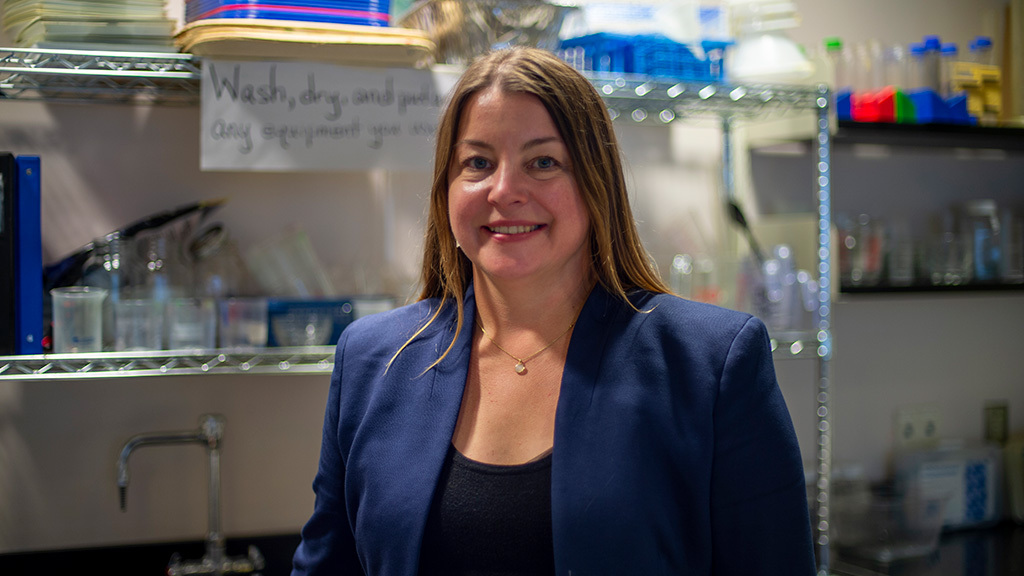Meet Lauren Madden, Science and Children's New Field Editor
By Jason Strohl
Posted on 2025-10-30

Disclaimer: The views expressed in this blog post are those of the author(s) and do not necessarily reflect the official position of the National Science Teaching Association (NSTA).
As the newly appointed field editor for Science and Children, NSTA’s practitioner journal for elementary teachers, Lauren Madden brings a wealth of experience to NSTA that spans the halls of The College of New Jersey to classrooms across the country, with a deep commitment to making science accessible and exciting for young learners. I recently spoke with her about the genesis of her scientific interests as a child, the importance of curiosity in pedagogy, and her thoughts about why journals like Science and Children are more important than ever.
From the Beach to the Classroom
Madden's journey into science education began on the shores of Long Island, where she grew up with the ocean in her backyard. "Protecting the oceans was important to me growing up," she recalls. That early passion led her to study chemistry in college, where she found her true calling in oceanography. "I really became so interested in the way our oceans as systems interact with the world," she explains.
But it was her experience teaching seventh-grade science in Columbia, South Carolina, that transformed her career trajectory. "I loved it so much; I wanted to learn more about it," she says of her decision to pursue a doctorate in science education at North Carolina State University.
Based on the knowledge she has acquired from her studies, Madden believes it's important to engage children in science at an early age. "Children are naturally curious and generally have lots of questions about how things work, what they are, and why they're here," she explains. The role of a good science teacher, she believes, is helping students explore those questions in ways that empower them to do more in the world.
But Madden acknowledges the challenges elementary teachers face. "One of the things that can make it tricky to teach science in elementary schools is the amount of resources that you need at times," she notes. Still, that hurdle does not dampen her passion for phenomena-based learning.
She offers a compelling example from her own experience as a high school chemistry student. "Oftentimes we took notes and solved equations on a phenomenon beginning on a Monday. Then on Friday we might do a lab demonstrating exothermic reactions. It's not that exciting if you do that at the end of the week because you've already been writing about it and solving problems prior to the experiment itself."
The alternative? Start with the experience, she contends. Let students wonder why a reaction produces heat, then build understanding from their curiosity. "We owe it to kids to show them cool stuff and let them have opportunities to ask those kinds of questions," Madden says.
When discussing what excites her about science teaching in 2025, Madden's enthusiasm is palpable. "You never see kids light up about other subjects the way they do about science, especially when they have a chance to really interact with something," she says.
Beyond the joy of discovery, Madden sees science education as essential preparation for navigating our information-saturated world. "The most important thing we can do right now is help people learn how to take in as much information as possible before making decisions and look for markers of credibility," she reflects. "Teachers need tools, not just to impart particular science content, but to instill ways of thinking that allow us to be good analytical creatures."
Leveraging Teacher Leaders
Currently, Madden is principal investigator on a five-year National Science Foundation grant that funds her work with 24 master-level teacher fellows, coaching them to become leaders at their respective schools. She believes that every elementary school has untapped potential in the form of passionate science teachers, such as the individual persona she calls the "butterfly lady"—an educator everyone goes to when they find a chrysalis, and whose classroom overflows with plants and ongoing experiments.
"Those people are incredible resources," Madden says. Her research explores how to support these natural science leaders in encouraging others within their schools and districts.
A Vision for Science and Children
As field editor of Science and Children, Madden is excited about exploring the wealth of information gleaned from articles submitted by science teacher educators, classroom teachers, and informal science educators. She wants to focus on themes like AI integration while continuing the journal's tradition of providing practical, teacher-tested resources.
"As a reader of Science & Children, I find a lot of ideas for teaching different kinds of topics or engaging with different learning strategies, like place-based learning, systems thinking, and problem-based learning," she explains. "Science and Children offers a toolkit for how to get there and provides a roadmap for implementing these strategies into the classroom."
Her criteria for evaluating instructional materials are straightforward: "I think the sign of a good lesson is not that students have mastered the content, but that students remain curious about those types of ideas."
Madden brings to her new role a clear philosophy shaped by years in classrooms and research labs alike. Science education isn't just about transmitting facts, she contends, it’s about fostering curiosity, teaching critical thinking, and empowering students to understand and engage with the world around them. Her advice for new teachers captures this philosophy perfectly: "You don't have to know all the answers. It's much better to know how to find answers, ask good questions, and explore them.
The mission of NSTA is to transform science education to benefit all through professional learning, partnerships, and advocacy.


